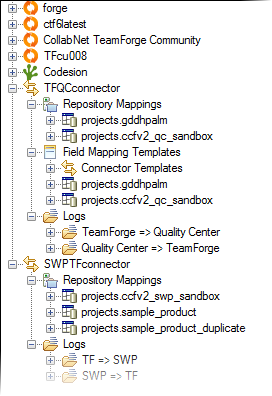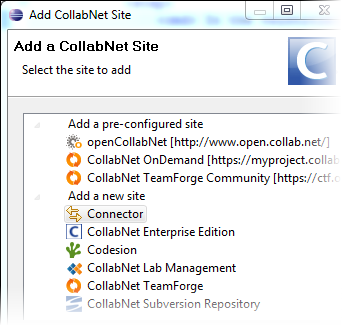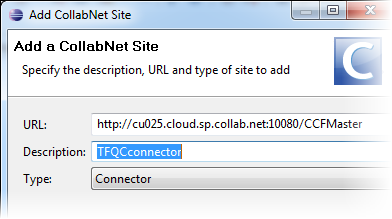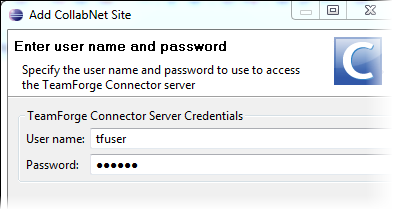To add a TeamForge connector site to your Desktop, you provide the URL of the connector server, and your account on the TeamForge instance for which the connector server is configured.
To set up the connector server, see these instructions:
When that's done, users can add the connector to their Desktop.
Note: This version of the Desktop (Development build 3.0.5 and later) integrates
CollabNet
Connector Framework more closely than
earlier versions.
Follow these steps to add a TeamForge
connector site:- To install the latest version, see these instructions.
- You no longer need the CCF Explorer to add a connector integration as in earlier versions. You can now do this in the CollabNet Sites view.
The TeamForge connector appears in the
CollabNet Sites view. You can expand it to see the connector's
repository mappings, field mapping templates, and log files. Here's an example:
 The connector functionality available in your Desktop depends on the permissions
you've been assigned in
TeamForge.
The connector functionality available in your Desktop depends on the permissions
you've been assigned in
TeamForge.



